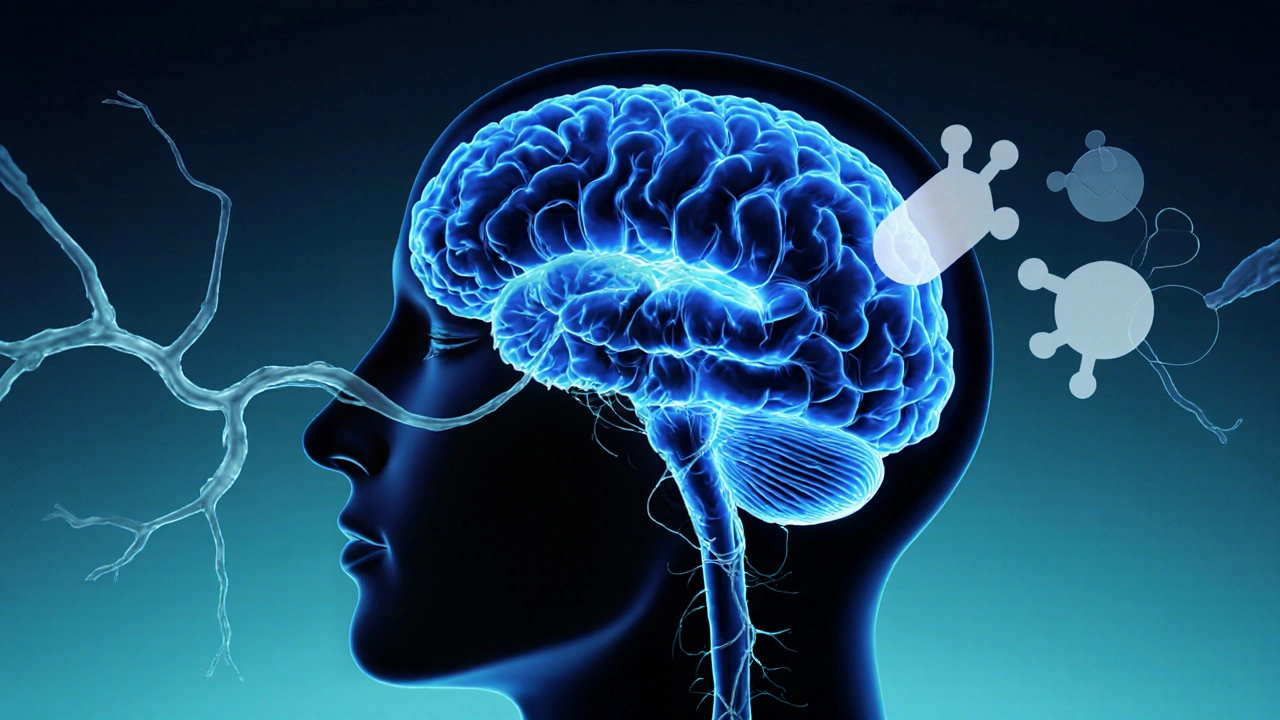Chemie drog – co se skrývá za účinky látek?
When exploring chemie drog, studie chemických složek, které způsobují fyzické a psychické efekty užívání. Also known as chemie látek, it links directly to how drogy, psychoaktivní substance s potenciálem vyvolat závislost působí na mozek. Understanding this connection helps uncover why závislost, stav, kdy tělo i mysl požadují opakované užívání může být tak těžké překonat a jaký význam má detoxikace, proces odstraňování toxinů z těla při léčbě. The chemistry behind each drug determines its metabolism, duration, and risk profile.
Klíčové komponenty chemie drog
Every drug contains active molecules that interact with neurotransmitters. The metabolismus of a substance dictates how quickly it is broken down by liver enzymes and how long it stays detectable in blood. For example, MDMA (extáze) is metabolized by CYP2D6, which explains why some people clear it faster than others. This metabolic pathway directly influences detoxikaci because faster metabolism usually means a shorter detox period, but it can also produce harmful metabolites that stress the liver.
Another important factor is the drug’s polarity. Lipophilic (fat‑soluble) compounds, such as THC, accumulate in fatty tissue and release slowly, extending their presence in the body. Conversely, hydrophilic (water‑soluble) substances, like alcohol, are eliminated more quickly via kidneys. This distinction shapes the strategy for detoxikace: for lipophilic drugs, supporting liver function and promoting sweating can aid clearance, while for hydrophilic drugs, adequate hydration is crucial.
Dosage and route of administration also alter chemical effects. Inhalation delivers the drug to the bloodstream almost instantly, causing a rapid spike in concentration and a higher risk of acute intoxication. Oral ingestion results in slower absorption and a more prolonged effect, which can influence the development of závislost because the brain adapts to the steady presence of the substance.
When multiple substances are combined, their chemické interakce can amplify toxicity. Mixing alcohol with benzodiazepines, for instance, potentiates central nervous system depression, leading to dangerous respiratory depression. Such synergistic effects underline why knowledge of chemie drog is essential for both prevention and treatment.
Regulatory frameworks often classify drugs based on their chemical structure. Substances sharing a core scaffold, like amphetamines, are grouped together because they exhibit similar pharmacological profiles. This categorization helps health professionals predict potential závislost and choose appropriate detoxikaci protocols.
Research continuously discovers new psychoactive substances (NPS) that mimic known drugs but evade legal control. Their chemical novelty makes it hard to anticipate health risks, emphasizing the need for up‑to‑date chemické analýzy in forensic labs. Detecting these compounds early can prevent widespread závislost outbreaks.
Understanding chemie drog also aids in developing antidotes. For opioid overdose, naloxone acts as an opioid receptor antagonist, quickly reversing respiratory depression. This targeted approach works because we know the precise receptor binding mechanism of opioids.
In the realm of detoxikace, supporting the body’s natural metabolic pathways is key. Supplements like N‑acetylcysteine boost glutathione levels, helping the liver neutralize reactive metabolites. However, such interventions should be guided by medical advice, as inappropriate dosing can interfere with drug metabolism.
Overall, the chemistry behind each drug shapes its risk, how it creates závislost, and the best strategies for detoxikaci. By grasping these molecular details, readers can make informed decisions about their health and better understand the content you’ll find in the articles below.
Below you’ll discover practical guides on detection times, health impacts, and safe practices—all rooted in the chemistry of the substances we discuss. Dive into the collection to see how each topic connects back to the core principles of chemie drog.

Jak vzniká závislost na drogách? Příčiny, procesy a prevence
Článek objasňuje, jak se vyvíjí závislost na drogách - od biologických změn po sociální vlivy, a nabízí praktické kroky prevence i léčby.
ČÍST VÍCE